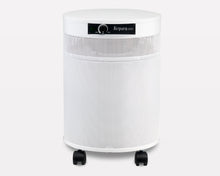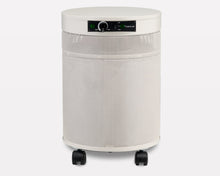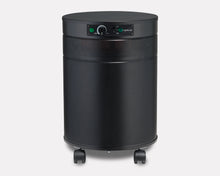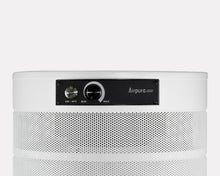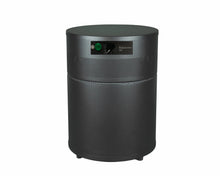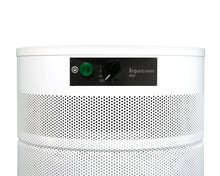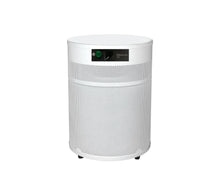Unmasking the Silent Threat: How Commercial Air Purifiers Conquer Mold in the Workplace
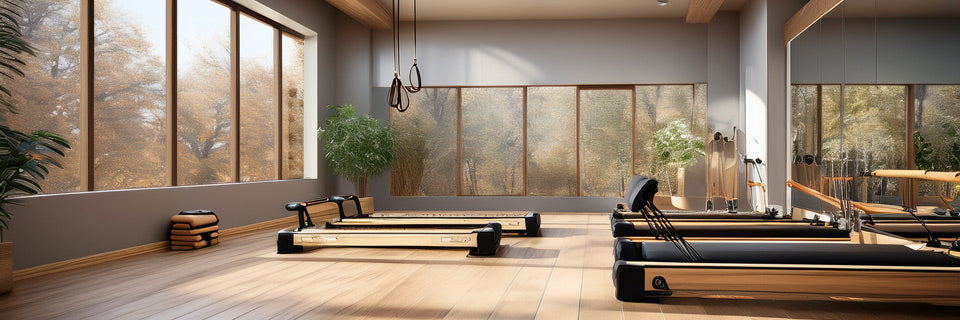
Mold. The word itself often conjures images of dark, damp basements or neglected corners. But the reality is far more pervasive. Mold spores are microscopic and ubiquitous, present in nearly every indoor environment. While often invisible, their impact on "workplace mold air quality" can be profound, affecting everything from employee health and comfort to building integrity. Simply addressing visible mold isn't enough; the airborne spores can silently circulate, leading to chronic issues.
At Commercial Air Purifiers, LLC, we understand that managing mold isn't just about cleaning surfaces; it's about controlling the air. Whether your business has experienced a minor water intrusion or is located in a humidity-prone region, actively managing airborne mold is crucial for fostering a truly healthy environment. This comprehensive guide will delve into the science of mold, detailing why dedicated "commercial air purifier for mold removal" solutions are indispensable. We'll explore the critical role of "mold remediation air filter" technologies and explain how a specialized "air scrubber for mold remediation" can be your most powerful ally in maintaining superior indoor air quality and protecting your most valuable asset: your people.
The Hidden Enemy: Understanding Mold and Its Impact on Your Business
Mold is a type of fungus that reproduces by releasing tiny, lightweight spores into the air. These spores are constantly floating around us, both indoors and out. When they land on a damp surface with an organic food source (like drywall, wood, fabric, or even dust), they can begin to grow and multiply, forming visible mold colonies.
Why Mold is a Persistent Problem in Commercial Settings:
Ubiquitous Spores: Mold spores are literally everywhere. They enter buildings through open windows and doors, HVAC systems, and even on clothing and shoes.
Moisture is Key: The most critical factor for mold growth is moisture. Leaks, high humidity, condensation, floods, or even poor ventilation can create the ideal conditions for mold to thrive. Common culprits in commercial buildings include leaky roofs, plumbing issues, condensation on pipes, and excessive indoor humidity from kitchens, restrooms, or even large gatherings of people.
Hidden Growth: Mold often grows in hidden areas, such as behind walls, under flooring, above ceiling tiles, or within HVAC ducts, making it difficult to detect until a significant problem arises or a musty odor becomes apparent.
Health Implications: Exposure to mold spores can trigger a range of health issues in employees and customers, including:
Allergic Reactions: Sneezing, runny nose, red eyes, skin rash, asthma attacks. Mold is a common allergen.
Respiratory Problems: Coughing, wheezing, shortness of breath, and exacerbation of existing respiratory conditions like asthma.
Irritation: Eye, nose, throat, and skin irritation.
More Severe Conditions: For individuals with compromised immune systems or certain sensitivities, mold exposure can lead to more serious health complications, including hypersensitivity pneumonitis. Some molds also produce mycotoxins, which can be harmful.
Odors and Property Damage: Mold often produces a distinct, musty odor that can be off-putting to employees and clients, signaling an underlying issue. Beyond health, mold can cause significant structural damage to buildings, degrading materials like drywall, wood, and insulation, leading to costly repairs.
The World Health Organization (WHO) has extensively documented the health impacts of dampness and mold in indoor environments, emphasizing the strong association between mold exposure and respiratory symptoms, asthma exacerbation, and allergic rhinitis. This reinforces that neglecting "workplace mold air quality" is not just an aesthetic issue but a public health concern that directly impacts business operations and employee well-being.
The Crucial Role of Air Purification in Mold Management
While addressing the moisture source and remediating visible mold growth are paramount, they alone cannot fully resolve airborne mold issues. This is where specialized air purification solutions, including "commercial air purifier for mold removal" units and "air scrubber for mold remediation" devices, become indispensable.
1. High-Efficiency Particulate Air (HEPA) Filtration: The First Line of Defense
The foundation of any effective "air purification for mold spores" strategy is a True HEPA filter. HEPA filters are designed to capture 99.97% of airborne particles as small as 0.3 microns. Crucially, mold spores typically range in size from 1 to 20 microns, meaning they are easily trapped by HEPA filtration.
Capture of Airborne Spores: When mold colonies are disturbed (e.g., during cleaning, maintenance, or even due to airflow), they release millions of spores into the air. A HEPA-filtered "commercial air purifier for mold removal" actively draws in this air, capturing these spores before they can spread, settle on new surfaces, or be inhaled.
Post-Remediation Cleanup: After professional mold remediation, microscopic spores can still linger in the air. Running HEPA air purifiers helps "mold remediation air filter" benefits by scrubbing the air clean, ensuring a safer re-occupancy.
Reducing Allergen Load: For individuals sensitive to mold, continuously removing spores from the air can significantly reduce allergic reactions and respiratory symptoms, contributing to a healthier workplace.
Our Experience at Commercial Air Purifiers, LLC: We've seen numerous cases where clients thought a simple cleaning would solve their mold problem. However, without addressing the airborne spores, employees continued to report allergy symptoms and musty odors. A small office, for instance, had a persistent mold issue in a rarely-used storage closet. Even after remediation, employees in adjacent offices complained of sneezing and stuffiness. Deploying a strategically placed commercial HEPA air purifier immediately reduced these symptoms, confirming the presence of lingering airborne spores that the purifier effectively managed.
2. Activated Carbon Filtration: Tackling the Musty Odor and VOCs
Mold growth often comes with a tell-tale musty, earthy odor. This smell is caused by microbial volatile organic compounds (MVOCs) produced by the mold as it grows. While HEPA targets the spores, activated carbon filtration is essential for eliminating these gaseous pollutants and odors.
Odor Elimination: A robust activated carbon filter, often found in a specialized "commercial air purifier for mold removal" unit, adsorbs MVOCs, neutralizing the unpleasant smell associated with mold. This is critical for improving the overall "workplace mold air quality" and making the environment more comfortable for occupants.
Chemical Byproducts: Beyond odors, some molds can produce various VOCs that may contribute to health issues. Activated carbon effectively captures these gaseous compounds.
3. UV-C Light Technology: Deactivating Mold Spores and Other Pathogens
Many advanced "commercial air purifier for mold removal" units incorporate UV-C (ultraviolet-C) germicidal irradiation. UV-C light has been scientifically proven to damage the DNA and RNA of microorganisms, rendering them unable to reproduce.
Spore Deactivation: As mold spores pass through the air purifier's UV-C chamber, the light deactivates them, preventing them from growing and reproducing even if they later land on a damp surface. This adds a crucial layer of protection, particularly valuable for "air purification for mold spores."
Broader Pathogen Control: Beyond mold, UV-C light also effectively neutralizes bacteria, viruses, and other airborne pathogens, contributing to overall better indoor air quality and reducing the spread of illnesses.
4. The Power of an Air Scrubber for Mold Remediation
While a standard commercial air purifier excels at continuous air cleaning in occupied spaces, an "air scrubber for mold remediation" is a specialized, heavy-duty filtration device often used by mold remediation professionals. These units are designed for more intense, rapid air cleaning, particularly during and after mold removal.
Negative Air Pressure: Air scrubbers, also known as negative air machines, are used to create negative pressure in a contaminated area (e.g., during mold remediation). This ensures that air flows into the contaminated zone from cleaner areas, preventing mold spores and other contaminants from spreading to other parts of the building during the remediation process. The contaminated air is then drawn through the air scrubber and exhausted, often to the outside, after thorough filtration.
High CFM and Multi-Stage Filtration: "Air scrubber for mold remediation" units typically boast very high Cubic Feet per Minute (CFM) rates, allowing them to process large volumes of air quickly. They feature multi-stage filtration, including pre-filters, HEPA filters, and often activated carbon, to capture a wide range of contaminants.
Site Containment: During active mold removal, professional remediators set up containment barriers. Air scrubbers are crucial within these containments to capture disturbed spores, ensuring they don't escape into uncontaminated areas.
When to Use Which:
Air Purifiers: Ideal for continuous, long-term "workplace mold air quality" maintenance, daily removal of mold spores, allergens, and odors, and post-remediation "clean air" maintenance in occupied spaces.
Air Scrubbers: Essential for professional mold remediation projects, water damage restoration, and construction sites where significant dust, mold, or hazardous particles are generated and containment is required. While you might not purchase one for daily office use, understanding their function highlights the importance of industrial-strength filtration when dealing with severe mold issues.
Beyond the Immediate Fix: Proactive Mold Management
True "workplace mold air quality" goes beyond reacting to visible mold. It involves proactive measures to prevent growth and continuously manage airborne spores.
Moisture Control is Paramount: No air purifier can replace addressing the root cause of mold: moisture. This involves:
Promptly repairing leaks (roofs, plumbing, windows).
Maintaining indoor humidity levels between 30-50% using dehumidifiers in damp areas (basements, server rooms).
Ensuring adequate ventilation in moisture-prone areas like restrooms, kitchens, and locker rooms.
Drying water-damaged materials thoroughly and quickly (within 24-48 hours) to prevent mold growth.
Regular HVAC Maintenance: Your building's HVAC system can be a pathway for mold spores. Regular cleaning of ducts, changing HVAC filters to higher MERV ratings (e.g., MERV 13), and ensuring proper drainage in condensate pans are vital.
Strategic Deployment of Commercial Air Purifiers: Place "commercial air purifier for mold removal" units in areas prone to dampness, high traffic, or where individuals with sensitivities work. Think about reception areas, breakrooms, basements, and any areas that may have experienced past water intrusion.
IAQ Monitoring: Utilize indoor air quality monitors to track humidity levels, particulate matter (including mold spores), and VOCs. This data helps identify potential issues early and confirm the effectiveness of your air purification strategy.
Professional Assessments: If you suspect a mold problem, engage a certified mold inspector or industrial hygienist for a professional assessment. They can identify hidden mold, determine the extent of contamination, and recommend a remediation plan.
Authoritative Source: The U.S. Environmental Protection Agency (EPA) emphasizes that "the key to mold control is moisture control." While they acknowledge air purifiers can help with airborne spores, their primary recommendation is always to fix the water problem first. (Source: EPA, Mold and Moisture, available on their website).
Conclusion: Breathing Easier, Working Better
Mold, though often unseen, poses a significant threat to "workplace mold air quality," employee health, and business operations. Reacting only to visible mold is a reactive, insufficient approach. A truly comprehensive strategy for "air purification for mold spores" integrates proactive moisture control with advanced air purification technologies.
At Commercial Air Purifiers, LLC, we empower businesses to create healthier, safer environments. Investing in high-quality "commercial air purifier for mold removal" units with HEPA, activated carbon, and UV-C filtration, alongside understanding the role of an "air scrubber for mold remediation" for professional interventions, is not just a cost – it's an investment in the long-term well-being of your workforce and the resilience of your business. Don't let mold be a silent saboteur; take control of your indoor air and cultivate a truly clean and healthy workspace.
Frequently Asked Questions
Q1: Can an air purifier alone remove mold from my workplace? A1: No, an air purifier alone cannot remove active mold growth. It is crucial to fix the moisture source causing the mold and professionally remediate any existing mold colonies. However, a "commercial air purifier for mold removal" is incredibly effective at capturing and deactivating airborne mold spores and removing the musty odors associated with mold, making it an essential tool for maintaining "workplace mold air quality" after the source has been addressed and remediation initiated.
Q2: What's the difference between a commercial air purifier and an "air scrubber for mold remediation"? A2: A commercial air purifier is designed for continuous, long-term air cleaning in occupied spaces, focusing on general indoor air quality by removing particles, VOCs, and pathogens. An air scrubber (or negative air machine) is a heavy-duty, industrial-grade filtration unit primarily used by professionals during mold remediation, water damage restoration, or construction. It's designed to handle much higher concentrations of contaminants, often creating negative pressure to contain airborne particles within a work zone, and is typically not used for routine, daily air quality maintenance in occupied offices.
Q3: How quickly can a "commercial air purifier for mold removal" impact air quality? A3: The impact of a "commercial air purifier for mold removal" on airborne spore counts can be quite rapid, often noticeable within hours of continuous operation, especially if the unit is properly sized for the space and has robust HEPA filtration. Odor reduction from activated carbon can also be quick. For lasting improvement in "workplace mold air quality," continuous operation and regular filter maintenance are key.
Q4: Should I use a dehumidifier with my air purifier for mold issues? A4: Absolutely. A dehumidifier addresses the root cause of mold growth by removing excess moisture from the air, while a "commercial air purifier for mold removal" tackles the airborne spores and odors. Using them together is a highly effective strategy for controlling "workplace mold air quality," especially in humid environments or after water damage, as mold thrives in high humidity.
About the Author: Commercial Air Purifiers, LLC is a leading provider of high-quality air purification solutions for commercial, industrial, and specialized residential environments. With years of experience and a deep understanding of airborne contaminants, we are dedicated to helping businesses and individuals achieve optimal indoor air quality. Our commitment to research-backed solutions and customer well-being drives our mission to bring the best air purifiers to the market.
Publication Date: July 4, 2025
References:
World Health Organization (WHO). (2009). WHO Guidelines for Indoor Air Quality: Dampness and Mould. Retrieved from https://www.who.int/publications/i/item/9789289041682
U.S. Environmental Protection Agency (EPA). (n.d.). Mold and Moisture. Retrieved from https://www.epa.gov/mold
AchooAllergy. (n.d.). Do Air Purifiers Help with Mold? Retrieved from https://www.achooallergy.com/blog/learning/do-air-purifiers-help-with-mold/
Health.com. (2025, July 1). The Best Air Purifiers for Mold, Smoke & Allergens. Retrieved from https://www.health.com/home/best-air-purifier-for-mold
Water Mold Fire Restoration. (n.d.). The Importance of Air Scrubbers. Retrieved from https://watermoldfire.net/equipment-supplies/air-scrubbers/

